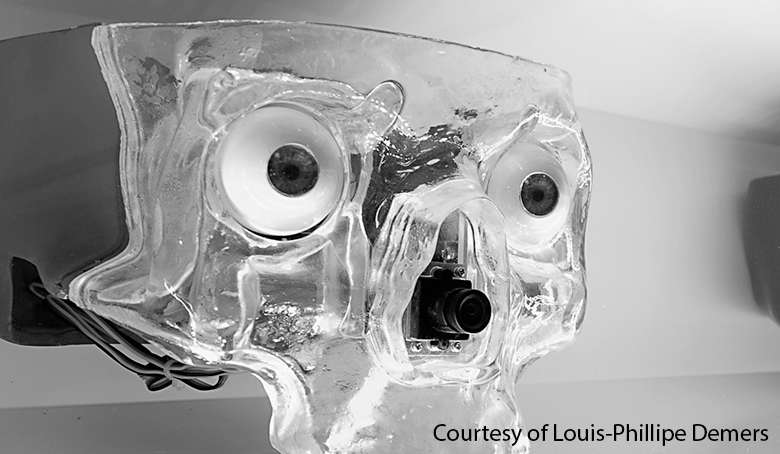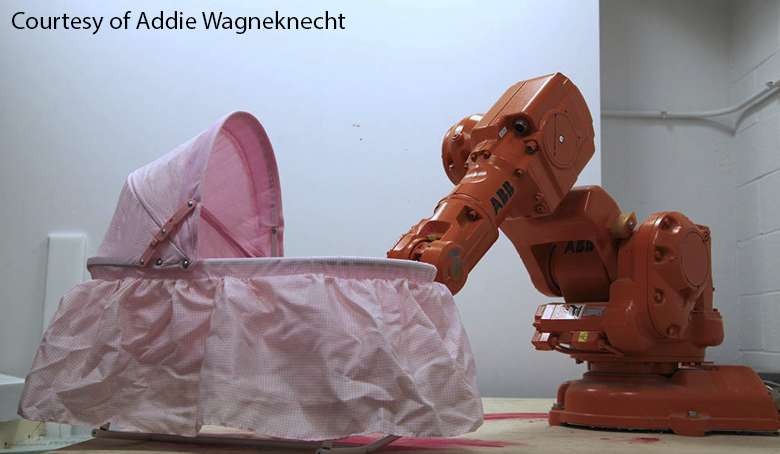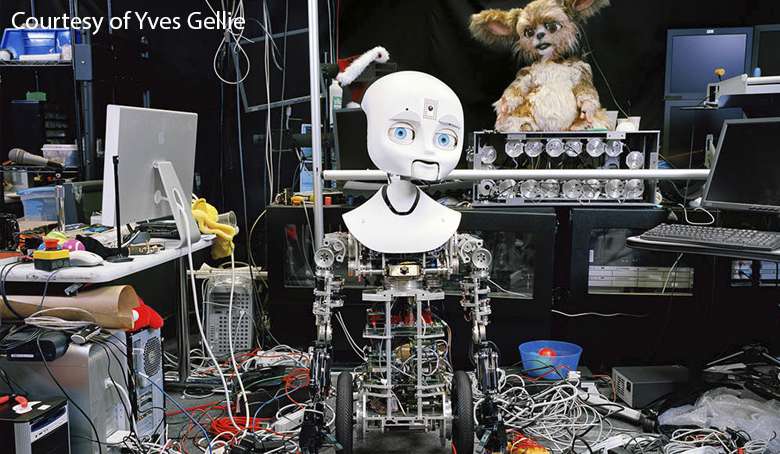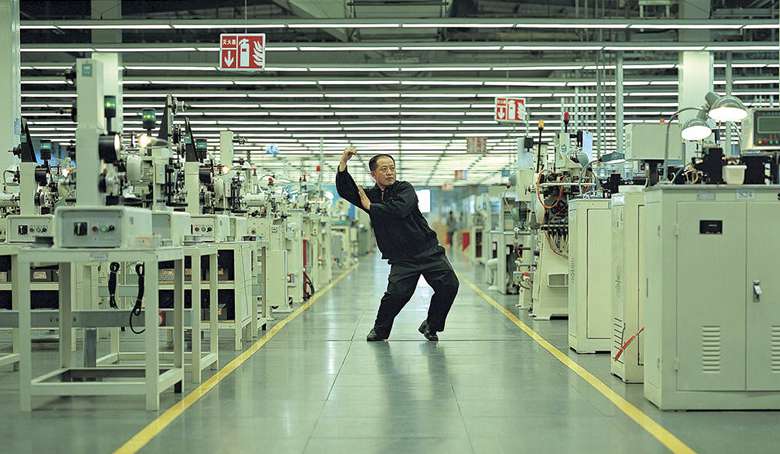Emerging technologies are changing the ways we encounter others: family, friends, co-workers and even pets. Are the personalities we interact with on our devices living, artificial, or some combination of the two? The second section of the show explores the changing nature of social relationships, due to advances in technology.
Featuring: Louis-Philippe Demers, Addie Wagenknecht, Heidi Kumao, Yves Gellie, Cao Fei, S.W.A.M.P, Alexander Prokovich, Nanyang Polytechnic - School of Interactive and Digital Media, To Be Another Lab and projects from South East Asia Hackathon.

Area V5, 2009-2010
Louis-Philippe Demers
Area V5 by Singapore based artist, Louis-Philippe Demers, is a wall of disembodied robotic eyes that follow visitors as they walk by. Recent developments in the field of social robotics and artificial intelligence suggest a prominent role of eye movement in establishing essential, non-verbal dialogue between humans and machines. The installation invites the viewer to experiment with the enigmatic gaze of disembodied eyes. It comments on the Uncanny Valley, a pseudo-scientific hypothesis that seeks to delineate the reasons why humans start to feel unease with robotic agents. The title of the work refers to the visual area V5 in the brain cortex which is thought to play a major role in the perception of motion.


Optimization of Parenting, Part 2, 2012
Addie Wagenknecht
Optimization of Parenting, Part 2 is a robot arm that gently rocks a bassinet whenever the baby inside cries or awakes from sleep. As an artist and a mother, Addie Wagenknecht developed this artwork imagining ways to balance her creative practice with motherhood. Mothers are socially expected to be full-time parents. This is sometimes due to a lack of options, the cost of childcare or a lack of family support. As a result, female artists who become mothers often lose the creative practice they have spent an entire life building.
Can some automatic repetitive tasks be transferred to robotic devices without affecting the development of the baby? There have been many technologies that have claimed to make domestic work easier, from vacuum cleaners to refrigerators, but the role of the mother is still considered sacred. Suggesting that a robot take over some of the parental tasks is a provocative gesture that highlights the difficulties of mothers who are always struggling to find a work-life balance.

Human Version, 2007-2017
Yves Gellie
This photographic work by well-known French artist, Yves Gellie, presents a series of portraits of humanoid robots in their native environments. It captures the reality of the world’s great research laboratories and gives a detailed insight into where and how humanoid robot research evolves. Gellie’s concept was to focus on the genesis of these robots, the sites of their creation, the evolution of their physical appearance, and the tools and materials used to bring them to life. The images capture cultural differences between research centres from around the world, leaving room for us to speculate on the motivations of the creators and on what place these robots may have in our everyday lives in the future.


Whose Utopia? 2006
Cao Fei
Cao Fei is a Chinese multimedia artist born in Guangzhou. This three-part video is the result of a 6-month artist residency at the Osram light-bulb factory in Foshan, China. During her stay, Cao Fei conducted workshops with the workers, many of whom are young emigrants from the inland provinces of China, asking them about their dreams and aspirations. Some of the responses were captured in Whose Utopia? which starkly contrasts the dreams and aspirations of the people with their everyday lives as factory workers.
By focusing on the hopes and dreams of individuals within a mass system, Whose Utopia? celebrates creativity and resilience of the human spirit, while questioning the systemic aspirations of economic development and efficiency: a system that desires machines with human intelligence and humans that can perform like machines.
